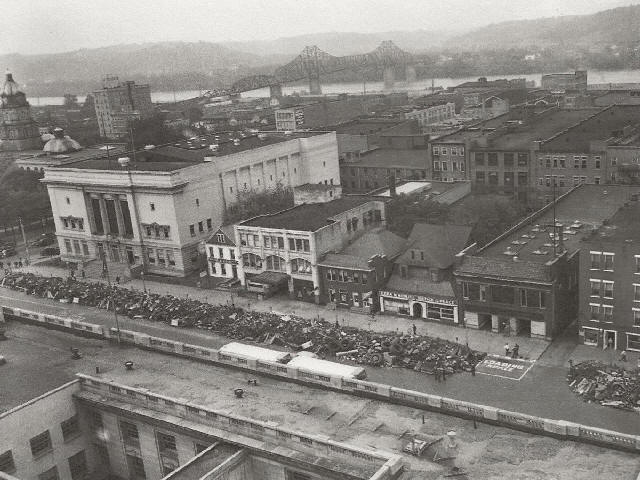
WWII Scrap Drives
------------------------------------------------------------------------------------------------------

A photo that was shot from the
nearby Prichard Building provides an aerial view
of the many tons of scrap metal collected in one of Huntingtonís war-time
drives.
The photo also offers a long-ago look at 5th Avenue. City Hall can be seen at
the
left of the photo and the Courthouse dome is visible behind it. Adjacent to
City Hall are several buildings long since demolished. The Ohio River
and the old 6th Street Bridge can be glimpsed in the background.
------------------------------------------------------------------------------------------------------
HUNTINGTON ó When the United States joined World War II
after the Japanese attack
on Pearl Harbor, the global flow of raw materials was disrupted. Basic
commodities
such as rubber and cloth immediately became precious and valuable to the
war effort.
Scrap drives were organized in communities across the country,
including Huntington,
encouraging citizens to contribute their old tires to make new jeep tires,
their old
clothing to make cleaning rags, their nylon and silk stockings to make
parachutes, and their leftover cooking fat to make explosives.
One of the most vital materials to collect was scrap metal. A
single medium
tank required 18 tons of it, and a single Navy ship hundreds more.
Huntington conducted a number of scrap metal drives during the
war years
(1941-1945). After each drive the collected metal was put on display in
the 800 block of 5th Avenue, then known as Government Square because
the area was home to Huntington City Hall, the U.S. Post Office and
the Cabell County Courthouse (located just across 8th Street).
Scrap metal drives became competitive, almost frenzied
affairs, as communities vied to
out-contribute each other. People were encouraged to imagine their household
items
being transformed into armor and weaponry for their soldiers and sailors in
harmís way. Ultimately, the effect of these scrap metal drives on actual
war production was marginal at best. Their true value was in
galvanizing citizen morale, instilling a sense of patriotic
unity and making everyone feel a part of the war effort.
-----------------------------------------------------------
Note: This Article and picture appeared in the Herald-Dispatch Newspaper on Feb. 2, 2021.
-----------------------------------------------------------
[ Back ]